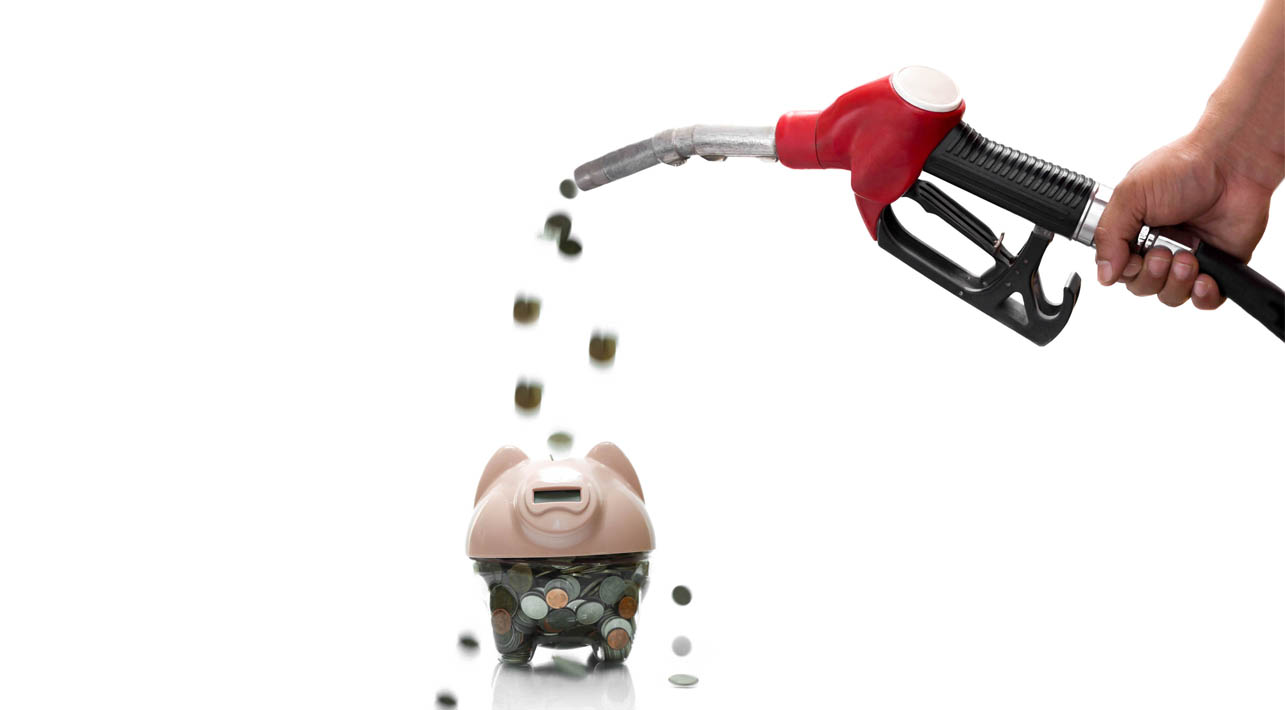Learning Zone
Four Effective Methods to: Reduce Your Fleet's Fuel Costs
Reduce Fleet Fuel Costs by up to 15% with our 4 Tips!
Fuel generally accounts for around 33% of a fleet’s operating costs, but without careful management can lead to significant overspend.

By deploying a number of simple, yet highly effective strategies you can greatly reduce your fleet’s fuel costs. Read on for some of our fuel saving tips.
1. Fuel Purchasing
If you operate a large, centrally-based fleet and buy commensurately large amounts of fuel, you have the option of purchasing wholesale fuel and running it out of your own fueling station. However, if you run a small-medium sized fleet and your drivers buy fuel at the pump, you have the option to use a fuel card.
A fuel card:
- Makes fuel reclaiming fraud much more difficult
- Provides discount on pump prices
- Gives you data for reporting
- Produces electronic receipts for easier management
Discover the best fuel card for your fleet here!
2. Vehicle Choice
Surprisingly, many fleets do not look at fuel consumption as a metric when choosing which fleet vehicle to purchase. A good place to begin is the official MPG figures provided by manufacturers; however there is debate on the validity of these figures, consumer reports state:
“we’ve found that the figures for certain vehicles can be far higher than many drivers will actually get. The largest differences involve some of the most fuel-efficient cars, particularly hybrids”.
3. Plan your Routes
Do your drivers plan their routes? If so, what do they base the “best” route on? The shortest route is not always the most efficient: for example, a shorter route with a lot of traffic lights and hills may use more fuel than a longer route with no traffic lights on level roads.
If you are based in Manhattan and have a meeting in Queens on Monday, and a meeting in Brooklyn on Tuesday, there are some fundamental questions to be asked from an operational point of view – couldn’t one of those appointments been moved due to the geographic locations of Queens and Brooklyn?
4. Driver Behavior
As long as your vehicles are well-maintained, the single biggest factor affecting fuel consumption is how the driver behaves behind the wheel: Chevin’s own data from 2014-2015 shows that poor drivers increase fuel costs by 21% compared to average drivers and 31% compared to good drivers. Provide your drivers with training based on these steps and you will notice the difference in fuel consumption:
Be in the right gear (+3% efficiency)
By shifting into the upper gears faster on level ground, there is almost no load on the engine. Also, let the vehicle roll in neutral when slowing down to make the most of kinetic energy.
Optimize routes (+12% efficiency)
Planning routes can make a huge difference – as mentioned earlier, distance shouldn’t be the deciding factors when optimizing your routes, if you can avoid slowdowns and heavy traffic but end up travelling a bit further, you will still save fuel
Drive smoothly (+31% efficiency)
Accelerate smoothly and shift gears early. Smooth driving with steady speed saves substantial amounts of fuel compared to hard acceleration and sudden braking.
Keep tires correctly inflated (+3% efficiency)
Under-inflated tires can cause fuel consumption to increase by as much as 6%. Find the most efficient tire pressure for your vehicle; usually found on a bevel in the driver’s side door or inside the vehicle manual
Remove unused external assets (+11% efficiency)
If they are not being used, heavy items like trailers and roof racks should be removed from the vehicle to save on fuel. These items add wind resistance, which increase drag by making the engine work harder
Remove excess weight (+1% efficiency)
According to the FuelEconomy.gov, “An extra 100 pounds in your vehicle could reduce your MPG by about 1%” – so aim to reduce the amount of extra weight added to the vehicle
Avoid idling (+4% efficiency)
A quarter of a gallon of petrol can be wasted for every 15 minutes you idle. Whenever you idle for over 10 seconds, you use more fuel than shutting off and restarting the vehicle.
Reduce Fleet Fuel Costs – Final Thoughts
We suggest that you use telematics and driver apps for more in-depth reporting on driving behavior and vehicle performance. You should look for:
- Reports when drivers are braking hardest, accelerating the fastest and idling the most. This allows you to accurately pinpoint where fuel is being wasted and where fuel can be saved.
- Audio and visual dashboard tools that highlight poor practice directly to the driver in real time. This will encourage better driving on the job instantly, rather than retrospectively.
- Integration into fleet fuel management systems, for more sophisticated analysis in a similar manner to fuel cards. For example, you can highlight mileage claims that don’t match routes actually taken, thus helping to tackle potential fraud.




